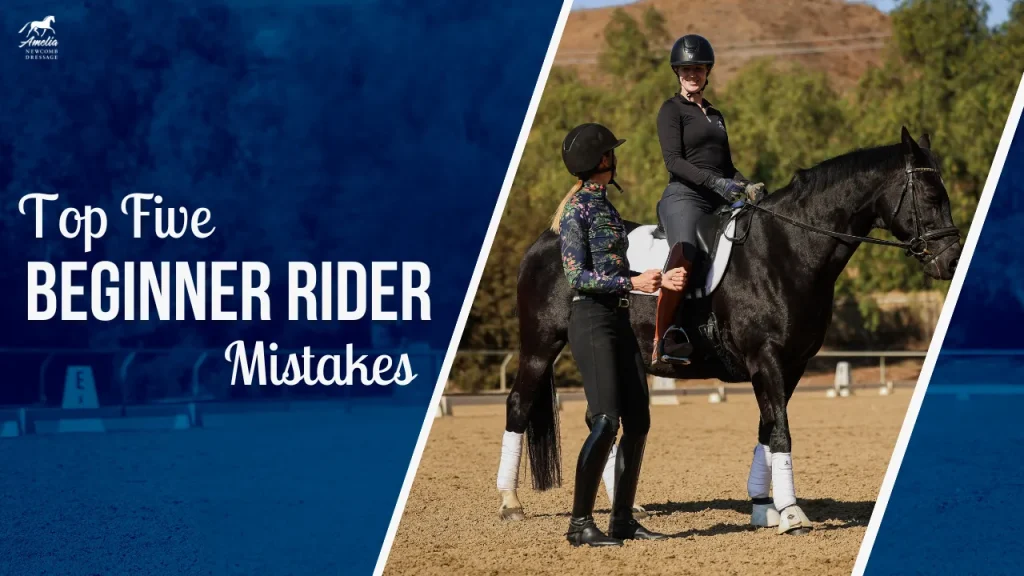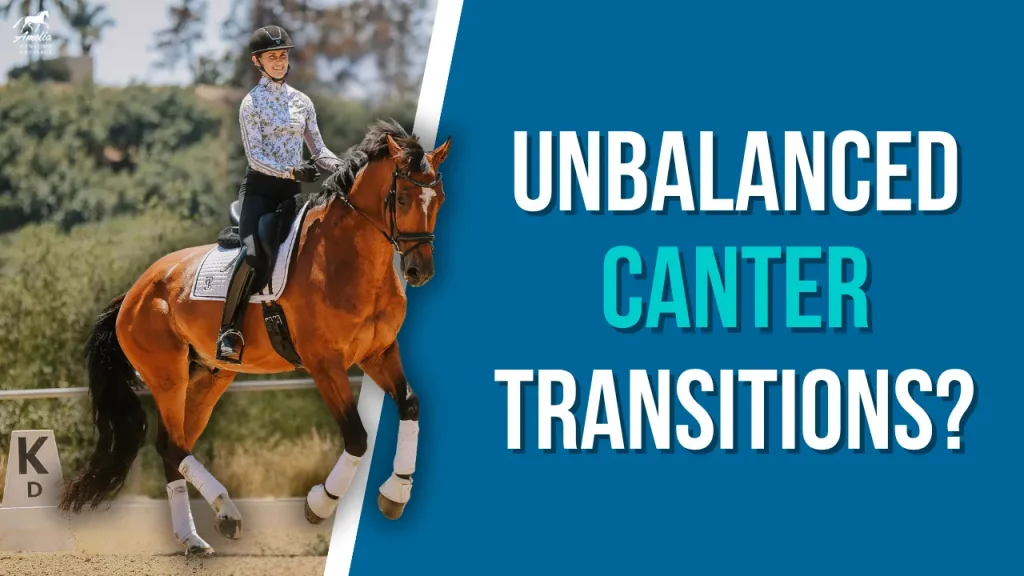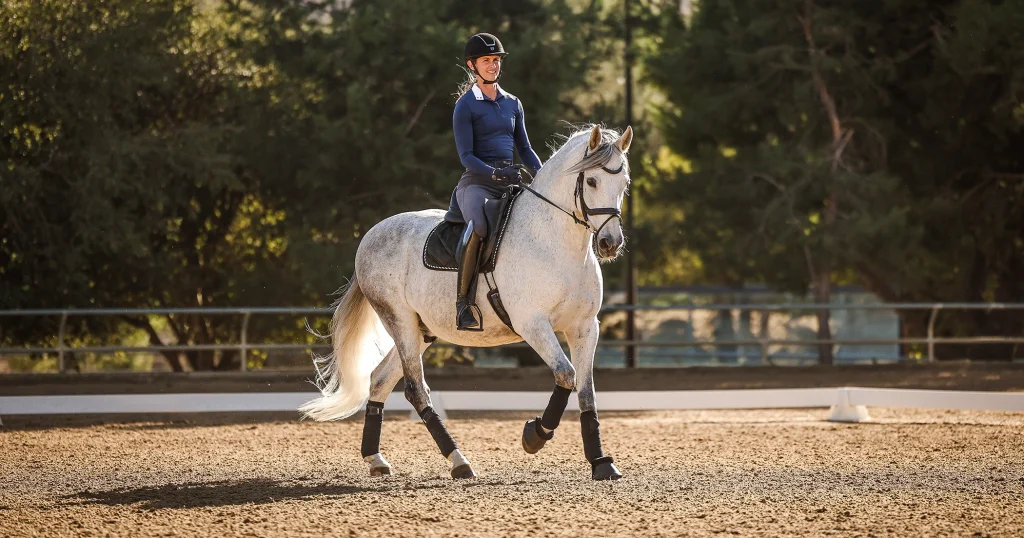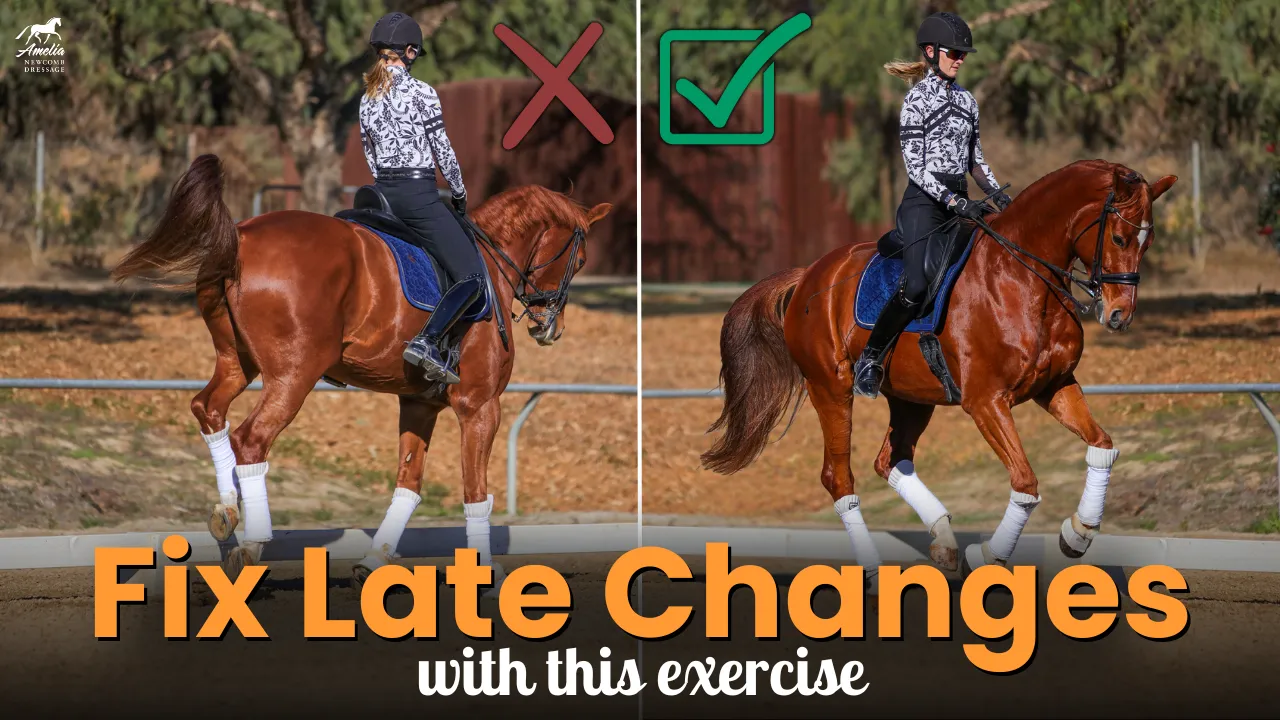Saddle fit is crucial for the comfort and performance of both you and your horse. A well-fitting saddle allows your horse to move freely, supports your riding position, and ensures that you are easy for your horse to carry. In today’s video, my assistant Caine walks you through the basics of saddle fitting and how to assess if your saddle is the right fit for your horse. In this week’s video, I share with you the basics of saddle fit, but I do recommend working with a professional saddle fitter if you have further questions or concerns.
Why Saddle Fit Matters
Ensuring the saddle sits centered and balanced on the horse’s back is essential to avoid discomfort or uneven pressure. An improperly fitted saddle can press against the horse’s spine or trapezius muscle, leading to discomfort and causing the rider to sit unevenly. This imbalance not only affects the horse’s movement but also makes the rider harder for the horse to carry.
Basic Saddle Fit Check
When placing the saddle on your horse, the first thing to do is check that it is sitting centered and balanced. Here’s a quick checklist to ensure your saddle fits properly:
- Spinal and Gullet Clearance: The gullet, or the spine of the saddle, should provide enough room for your horse’s withers to lift and for their spine to flex. If the gullet is too narrow, it will pinch the horse on either side of their spine, making it uncomfortable for them to bend and flex.
- Tree Angle Alignment: The angle of the tree should match the muscle behind the shoulder. If the saddle sits too far forward, it can block the horse’s shoulder movement. The billets should naturally fall into the girth groove without needing to be pulled forward or back when securing the girth.
- Weight Distribution: Wiggle the saddle slightly—if it moves too much or falls to one side, it’s not fitting correctly. Your saddle should stay in place even without the girth secured, though it’s important to remember that the saddle will compress slightly when you sit in it.
Mapping Your Horse’s Back
Using the landmarks on your horse’s back can help you determine where the saddle should sit:
- Scapula (Shoulder Blade): The front edge of the saddle tree should sit behind the scapula, not on top of it. This allows the shoulder to move freely.
- Trapezius Muscle: Avoid placing the saddle over the trapezius muscle, a non-weight-bearing area. The saddle should sit on the longissimus muscle, which is designed to bear weight.
- Last Rib: The weight of the saddle should not extend beyond the last rib, as this can put pressure on non-weight-bearing areas of the back.
Common Saddle Fit Issues
Even if a saddle has the proper gullet width, tree clearance, and angle, it might still not fit your horse. For example, a saddle that is too large can extend beyond the last rib, placing weight in areas that can cause discomfort. Additionally, if you notice that the billets are not aligning with the girth groove, it’s a sign that the saddle isn’t sitting properly.
If your saddle is too narrow, you might notice atrophy behind the croup, sometimes referred to as a “hunter’s bump.” Conversely, a saddle that is too wide may cause atrophy in front of the withers, resulting in a dip in this area.
Saddle Fit for the Rider
It’s not just about the horse—the saddle needs to fit the rider as well. If the saddle doesn’t suit you, it can negatively impact your riding position and make it difficult to maintain balance. Consider factors like seat size, knee blocks, and flap length. If these elements aren’t right, you’ll find yourself fighting the saddle rather than riding comfortably.
Final Thoughts
Proper saddle fit is essential for a comfortable and effective ride. It impacts your horse’s ability to move freely and your ability to maintain a balanced and centered position. Regularly checking your saddle’s fit and making adjustments as needed can prevent discomfort and potential injury for both you and your horse. If you’re unsure about your saddle’s fit, it’s always a good idea to consult with a professional saddle fitter.
I hope that you enjoyed these tips from Caine on saddle fit!
Happy riding!
Amelia












































